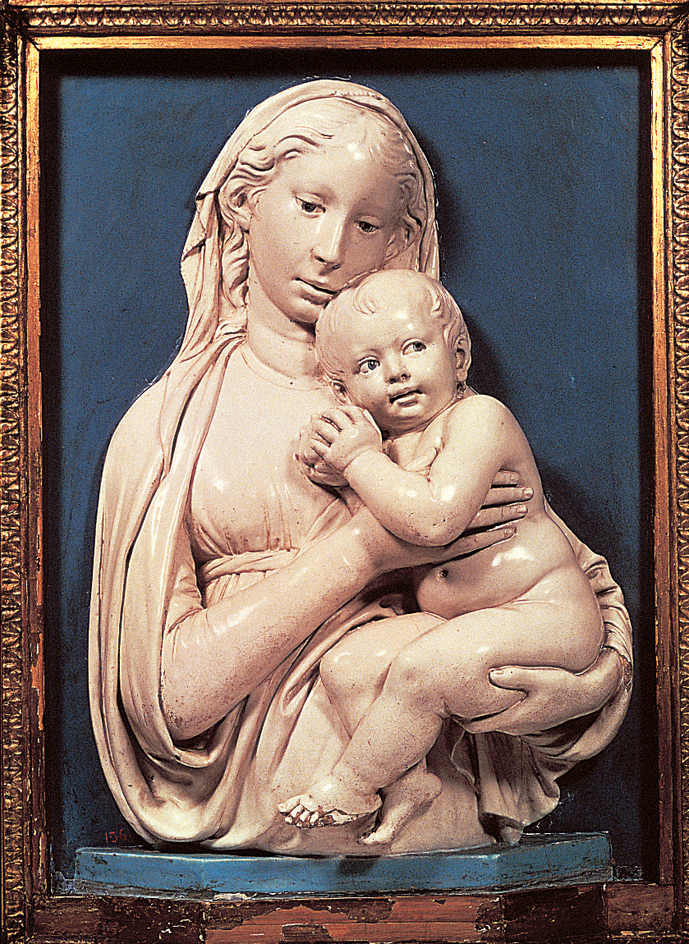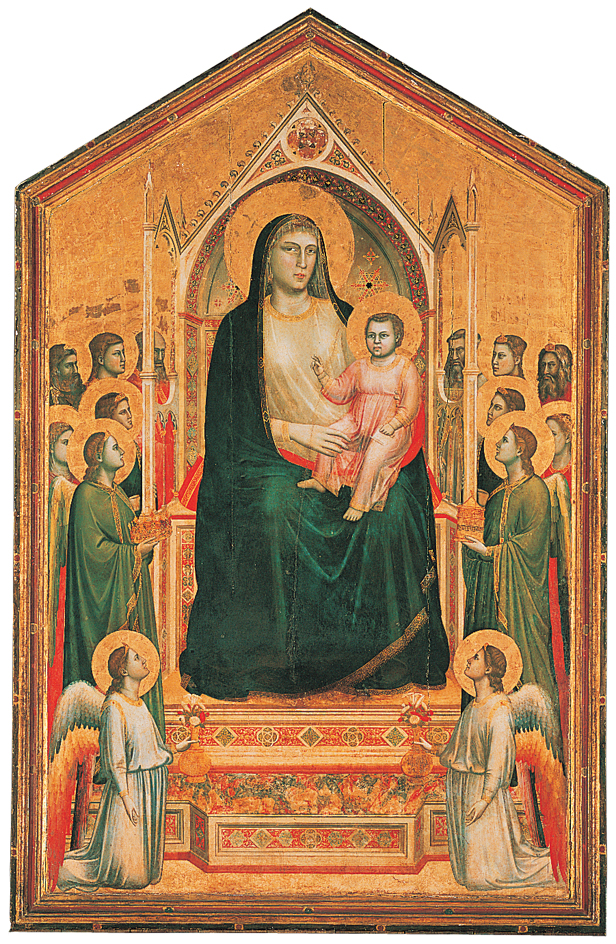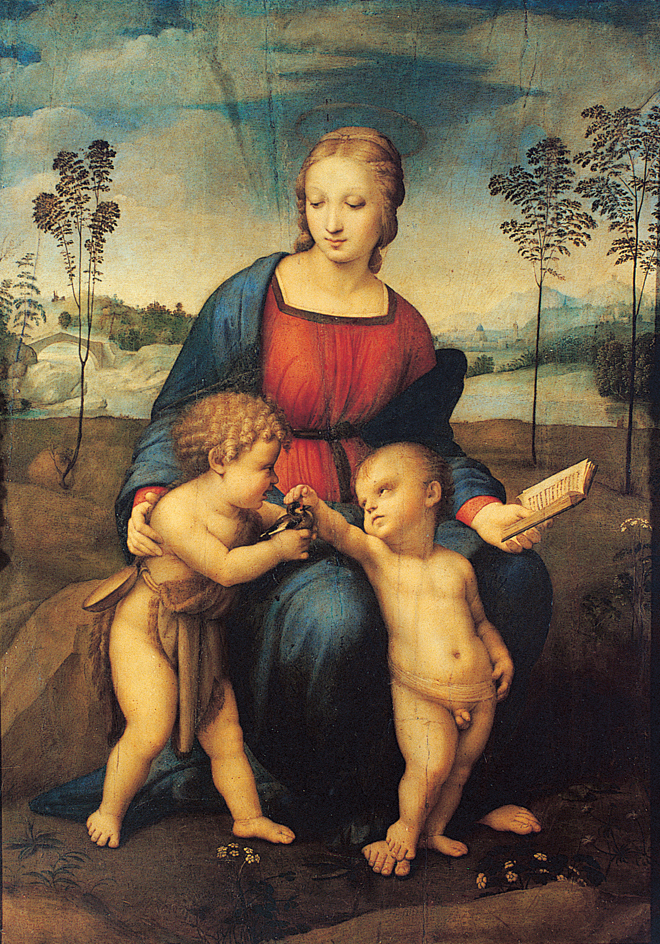Madonna and Child are the Virgin Mary and the infant Jesus in works of art. The Madonna and Child rank among the most important art subjects that the Christian religion has inspired.
Madonna means my lady in Italian. But the term has come to mean the Virgin Mary. Painters and sculptors produced some of their greatest works on the Madonna during the Renaissance (see Renaissance ). Michelangelo’s Medici Madonna is one of the finest sculptures of the Madonna. Terra-cotta figures of the Madonna by the sculptor Luca della Robbia are well known.

Painters of the Madonna.
Saint Luke painted the first Madonna picture, according to legend. But the Virgin Mary and Child became symbols of the accepted Christian faith only after the Council of Ephesus, in present-day Turkey, in A.D. 431. Then the number of Madonna pictures began to increase. The oldest Madonna pictures are those found in the catacombs of the early Christians.

Stiff images set against a gold background from the Byzantine period served as models for other artists until the 1200’s. Then the painters of the early Renaissance introduced a style that featured more background scenery. Giovanni Cimabue, the first of these painters, tried to put natural life into his paintings instead of copying the Byzantine types of figures.
The Madonna and Child was one of the most popular subjects for painters in the later Renaissance period. Raphael produced some of the greatest paintings of the Madonna. His painting Sistine Madonna, completed in 1515, hangs in Dresden, Germany. It shows the Virgin Mary carrying the infant Jesus in her arms. On one side, Pope Sixtus II kneels in prayer. Saint Barbara kneels on the other side. Below, two cherubs lean forward. Raphael originally painted this work as an altarpiece for the Church of San Sisto in Piacenza.
Other great painters who portrayed the Madonna included Giovanni Bellini, Leonardo da Vinci, Giorgione, Fra Filippo Lippi, Andrea del Sarto, and Titian.
Types of Madonna paintings.
Paintings of the Madonna are usually divided into five classes, according to the general styles of treatment:

(1) Portrait of the Madonna. In this class, the Madonna usually appears as a half-length figure against a background of solid gold leaf, or with cherubs. She wears a blue robe, starred or marked with gold, often draped over her head. The first paintings of the Madonna, in the Greek or Byzantine period, belong to this group. This type evolved into the Madonna of Humility, in which the Madonna sits humbly on the ground while holding the Child. Baldovinetti’s Madonna, exhibited in the Louvre, Paris, is an example from the late Renaissance.
(2) The Madonna enthroned. The Madonna sits on a throne or platform in this largest class of paintings. The treatment varies widely. Examples include Virgin and Child Enthroned with Angels and Saints by an unknown Byzantine artist and The Madonna Enthroned with Angels by the Italian artist Cimabue.
(3) The Madonna in glory. The Madonna and her attendants hover in the sky in paintings of this group. Heaven is suggested by a halo (circle of light), clouds, or cherubs, or by posing the figures in air just above the earth. The halo originally surrounded the entire figure, instead of only the head. It was generally oval in shape. Examples of this type of painting include The Sistine Madonna by Raphael; and Madonna of the Stars by Fra Angelico, in the monastery of San Marco in Florence. El Greco’s The Virgin with Saint Ines and Saint Tecla is another example of this type of painting.
(4) The Madonna in pastoral scenes. Paintings in this class have a landscape background.

(5) The Madonna in a home environment. This type of composition shows the Madonna and Child receiving homage in a realistic setting. It was especially popular in northern European art. Madonna by Quentin Massys pictures a Flemish bedroom of the 1400’s. In The Madonna and Child with Chancellor Rolin, Jan van Eyck pictured the Madonna in Flemish scenery of the 1430’s. In the 1600’s, Rembrandt followed this tradition by showing the Holy Family in Joseph’s carpenter shop.
